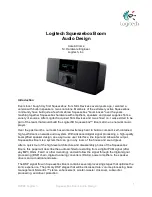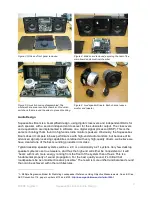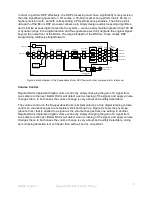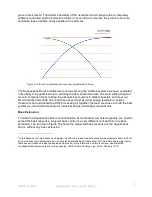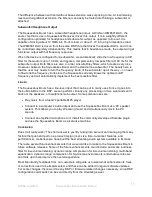
©2008 Logitech
Squeezebox Boom Audio Design
6
In order to perform DSP effectively, the DSP processing must have significantly more precision
than the signal being operated on. Of course, a 16-bit processor can perform 32-bit, 48-bit, or
higher precision math, but with corresponding CPU performance penalties. The 48-by-24-bit
data path of the Boom DSP processor allows us to simply design audio processing algorithms,
and minimize excess digital noise into the system – we can easily maintain greater than 100 dB
of dynamic range in the digital domain and thus guarantee we don’t degrade the original signal
beyond the noise floor of the DACs. The large bit-depth of the DSP we chose makes DSP
programming relatively straightforward.
!"#$
%&'(')*+,-'*.-
./%*0()1*#23
4'$&*4)-'*
5'-'(6&)(
7
7
.-89&
:);91'
<6,-
:);91'
=6$$>4('?;'
4)-'*#)-&();$
@
%&'(')A+
<6,->%9?
#()$$)B'(
C'6D8E)-'>%9?
<9F
<,F*4)*<)-)
=';)G*HIICJ
+
K
%&'(')*C'6D8E)-'>
%9?G))L'(*M9&
"!#
./%
#()$$)B'($
7
!
!
!
!
%8'6N'(
2()&'O&,)-
2)G'(
!18;,
!
'($
+'L&*4G''&'(
+'L&*P))L'(
K,QE&*4G''&'(
K,QE&*P))L'(
"!#$
"%2
Figure 8: Block diagram of the Squeezebox Boom DSP flow (with other components for reference)
Volume Control
Regular DACs implement digital volume control by simply changing the gain of a signal from
one sample to the next. Better DACs will detect a zero-crossing of the signal, and apply volume
changes there. In both cases the volume change is very abrupt and audibly detectable.
The volume control on the Squeezebox Boom is implemented as a true digital ramping volume
control so volume changes are completely click and pop free. Figure 9 shows the envelope
(about 40 ms) that is applied to a signal as the volume changes from one setting to another.
Regular DACs implement digital volume control by simply changing the gain of a signal from
one sample to the next. Better DACs will detect a zero-crossing of the signal, and apply volume
changes there. In both cases the volume change is very abrupt and audibly detectable. Using
zero crossing detection is much better than without, but it’s not perfect.

